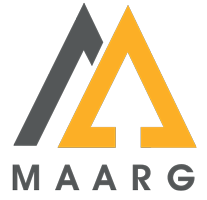What is 14001: 2015?
This is an Environmental Management System and it is designed to manage immediate and long term environmental impacts of an organization’s products, services and processes. This 14001: 2015 Certification provides and assures a company’s stakeholders that the environmental management system of the company meets international environmental standards. ISO defines an EMS as a part of the management system used to manage environmental aspects, fulfill obligations, and address the risk and opportunity. Within a plan-do-check-act (PDCA), the framework of the standard can be used for continuous improvement.
Benefits of ISO 14001:2015?
Organizations who have implemented ISO 14001: 2015 EMS have the following benefits:
- Helps to comply with legal requirements:
One of the key benefits of implementing 14001:2015 is providing a framework for identifying, monitoring and complying with different environmental requirements that can be applied for the processes. Though the company tries to follow all applicable laws before implementing EMS, the system itself can support in maintaining the observance. In addition to that, implementation of the certification informs the public that you care about the environment and you have a proven frame to identify, comply with various legal, regulatory and contractual requirements.
- Brings higher success rate
When attempting to make improvements, you should ensure that your data is good and accurate which is considered as a key element of the ISO 14001 standard. When placing the improvement activities in the right place, there are increased chances to track the improvement through good data collection and even if the initiative goes out of the track, you can easily find it out sooner. It helps you to correct problems and give faster recovery, simultaneously save time and money.
- Helps to control cost
EMS helps in cost control incredibly. It happens by using your system to trace out, control and mitigate the number of environmental incidents occur which eventually cost your enterprise through the cost of fines, and reparations. You can utilize the improvement facet of EMS to help in reducing the cost by working to preserve the energy, input material needed by the company processes.
- Supports supplier’s a better environmental performance by associating them into the enterprise’s business systems.
- Improves the company’s reputation and the confidence of stakeholders through deliberate communication.
- Increases leadership involvement and employees’ engagement.
- Reduces energy consumption
- Reduces customer audits
- Reduces insurance rates
Intangible EMS benefits:
- Improves corporate image among Customers, Public and regulators
- It is a proof of social responsibility
- Promotes employees’ morale
How to proceed to get certified with ISO 14001: 2015?
While working out for implementation and preparation for certifications, the following points have to be followed.
- EMS scope: Firstly, you need to define the EMS scope. It aids in preventing the inclusion of areas of the business that might not have an effect on the environment. The environmental aspects and policies are the core tools to define the scope. To create an EMS, these are the primary documents that are definitely needed.
- Management support: If you fail to acquire management support, then getting ISO 14001 is quite critical. Your good sales support in convincing your management for getting certified with ISO 14001:2015.
- Implementing the EMS process and procedure: The current processes will be linked to the existing processes in your organization. As not all processes need to be documented procedures, it is vital to decide the most important one to be documented so as to prevent environmental damage.
- Execute training and awareness: Employees should undergo training on14001:2015 and should know why it is done. Everyone in the organization must know why the certification is considered and how it fits into the equation.
- Perform internal audits: The certification body requires a company for an internal audit before going for a certification audit. It ensures you plan of doing the processes and if not you will find a chance to fix any issues that you find.
- Implement curative actions: In order to promote the system and fix problems, corrective actions should be used to trace out the root cause of any issues and take action to rectify the root cause. During your internal audits, management review and measurements, such problems can be identified.
- Certification Audit – Phase 1 – The Certification body will have a review on your documentation and scrutiny whether all the necessary requirements address the standard of ISO 14001. You will be issued with an outline report by the auditors stating that whether you comply with the standards, and the problematic areas. Hence, you get a chance to execute any corrective actions to address the problems.
- Certification Audit – Phase 1I – In this main audit, the auditors from the certification body will perform in-house auditing where they will have a review on your records such as corrective actions, internal audits and management review. This audit will be conducted for several days. Then, they will issue a report detailing their findings and whether they find your EMS to be effective and comply with the ISO 14001 requirements. If you meet out all the requirements, then you will be recommended for certification.

Recent Comments